How to Achieve Outcome-Based Financial Management Information System (FMIS) Proposals
This is the second in a series about improving government FMIS tenders:
- How to Improve FMIS Tenders
- Gateway to Effective Government FMIS Tenders
- Value for Money in FMIS Procurement
The Problem With FMIS Tenders
Vendors grumble about complicated government tenders and byzantine acquisition processes. Yet, government organizations need due diligence for transformational procurements such as Financial Management Information Systems (FMIS) as software to support Public Financial Management (PFM) reform covers a wide spectrum.
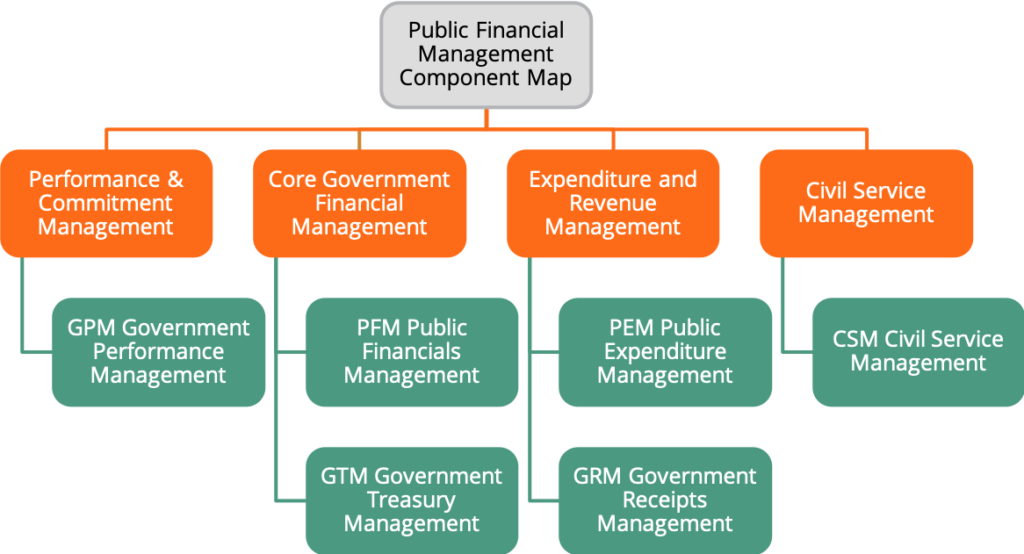
The interaction among FMIS modules, functions and components is also complicated.
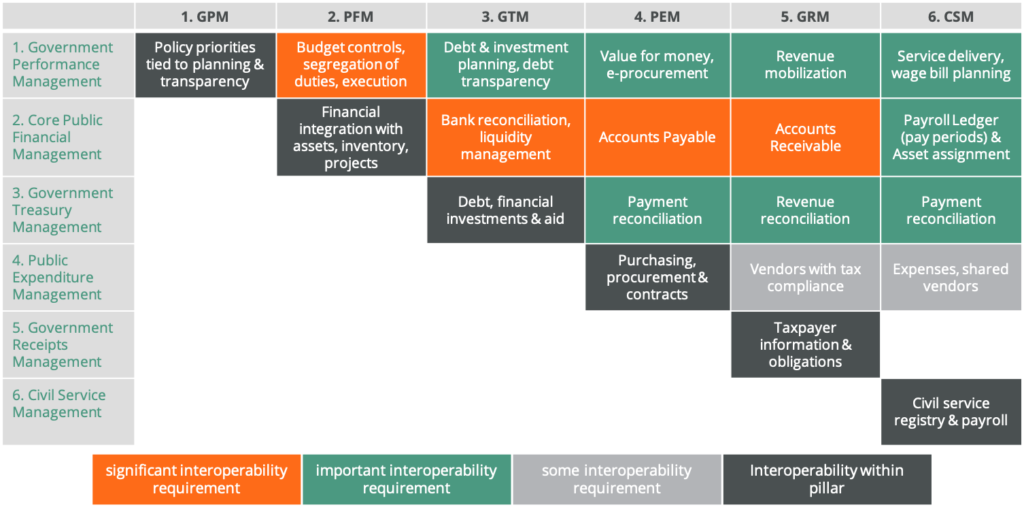
And, the support for functions across the government budget cycle often requires a portfolio of many financial applications. Multiple public finance systems are required to support government budget cycles.
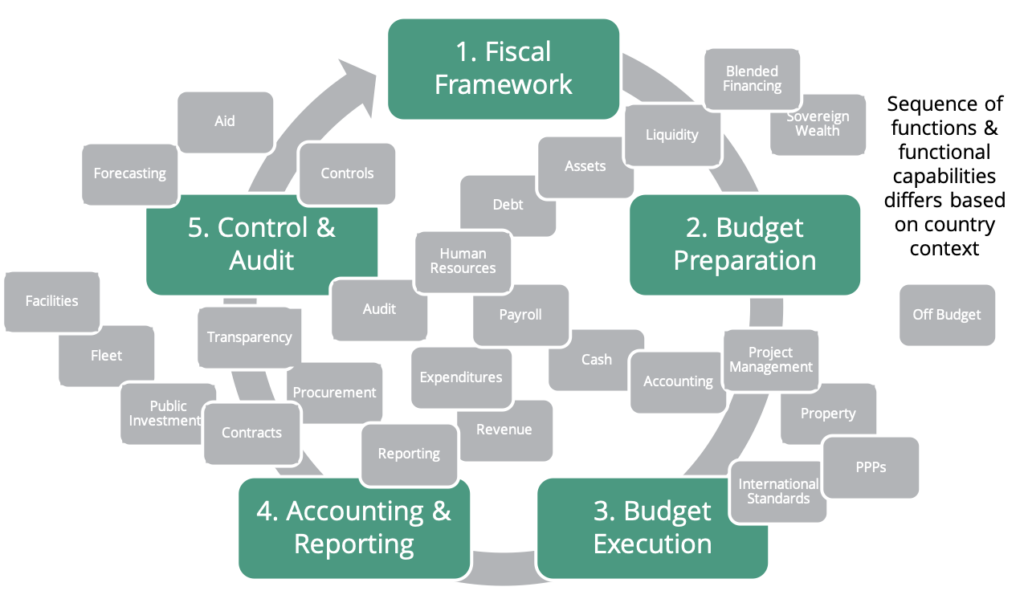
How to Improve FMIS Tenders
Governments can align government priorities with FMIS acquisition processes through the use of “gateway” requirements. These requirements recognize vendor capabilities to support and sustain PFM reform in line with government needs.
What are Gateway Requirements?
Gateway requirements task vendors with explaining how they plan to support government objectives and are a much better way to evaluate vendor abilities.
Three gateway requirement types are:
- Link: align reform to government priorities
- Transform: implement transformational reform
- Sustain: enable future reform
1. Link to Government Priorities
As explained in the previous post, FMIS tenders come from a broader context than a ‘normal’ procurement process. An acquisition of a government financial management system is usually part of a public financial management reform and modernization process specific to that country’s context, government situation and their particular reform drivers.
Effective FMIS providers understand these important linkages.
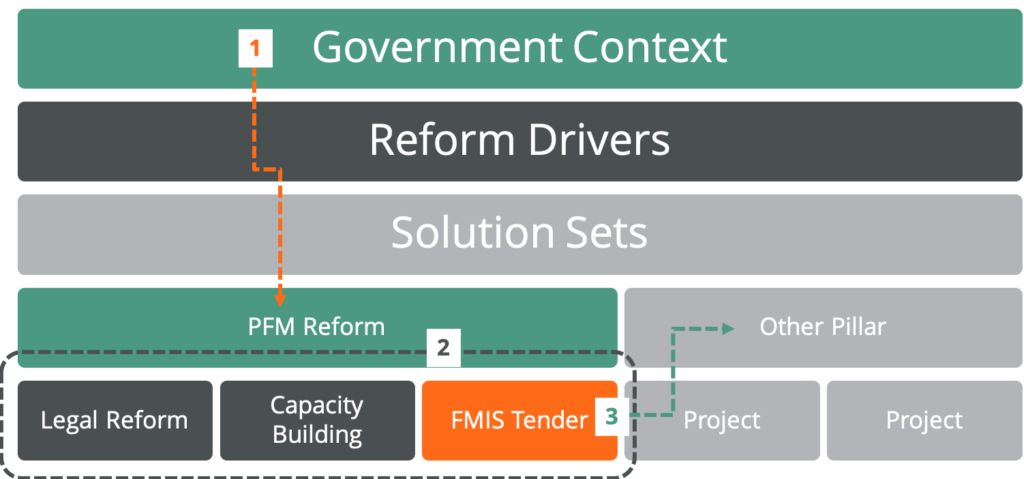
FMIS tenders need to be aligned with the government context, other PFM reform initiatives and other reform pillars.
Using gateway requirements enables bidders to provide narrative about how:
- PFM reform supports reform plans, national development strategies and government priorities explicitly – not in general, not through high-level assertions, but exactly how PFM reform will support government priorities and address political, economic, social, and environment context.
- The proposed FMIS software connects with process and legal reform, and how the vendor expects to assist in capacity building and prioritize functions.
- The full PFM portfolio will enable and adapt to other reform pillars and projects because, as a cross-cutting governance initiative, the management of public finances is not siloed.
Governments do not need vendors to show up and ask questions about how processes are done and why these processes are done this way. Governments need vendors who understand the context and provide insight.
Governments should ask gateway questions about experience in similar circumstances. Not in any other country or large organization but in governments in similar contexts (human development, governance and reform agendas). What did these vendors do in these situations? What advice can these vendors provide on how governments can achieve priorities in better ways than perceived in tender documents?
2. Recognize FMIS as Transformation
FMIS implementations are much more than technical interventions with IT and software.
There’s a lot of talk about digital transformation these days. The important concept to bear in mind is that it’s about organizational transformation enabled by digital technology. These implementations are almost always transformational because of:
- Technology difficulty
- Software change and requirements management
- Process re-engineering and modernization complexity
- Incentive, capacity and change government constraints
- Political nature of projects, including intervention
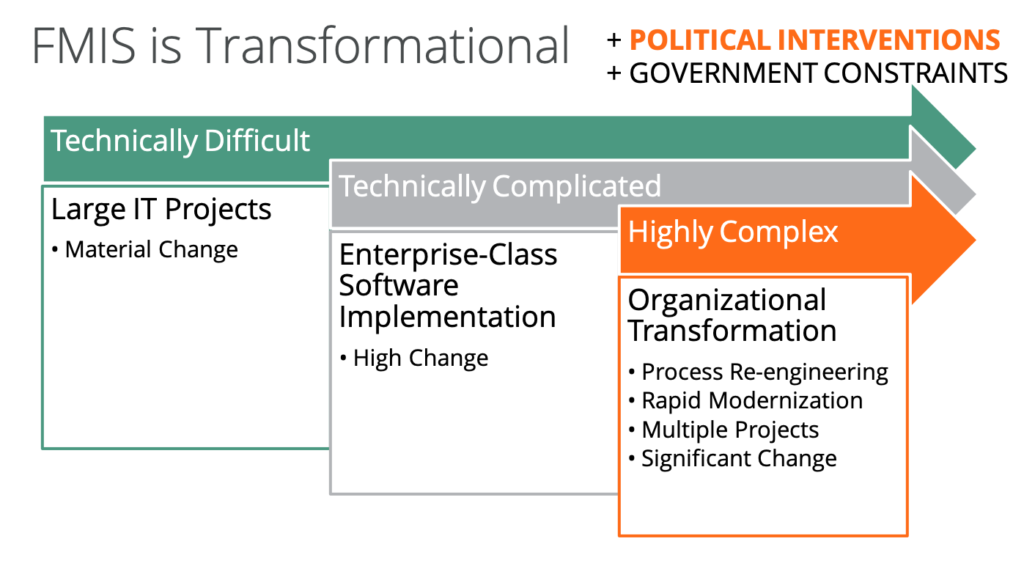
In gateway requirements, bidders should be able to provide narrative about how:
- Requirements will be adjusted to reflect realistic changes, budget cycle and controls integration with a view of supporting in-context good practices rather than so-called “best practices” that may prove inappropriate until later modernization
- Organizational change management and capacity building efforts will succeed with this project and are integral to proven methodologies in similar circumstances
- Governance structures will support government project scrutiny, establish government commitments, and senior vendor management oversight
3. Sustain Reform
A FMIS implementation is a ‘station’ on government reform journey: process modernization, functional completeness, fiscal decentralization and transparency. It is therefore critical that FMIS systems support future government reform.
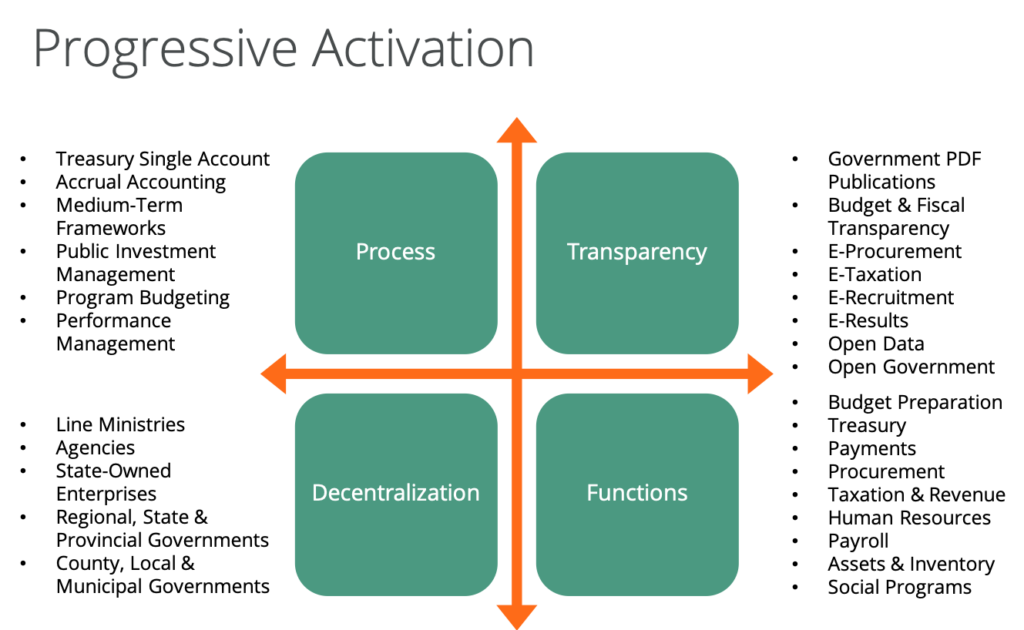
The important consideration here is whether proposed vendor solutions can adapt during the reform journey. It does governments no good to have solutions that meet current requirements but require significant effort to adapt to the next wave of modernization. FMIS implementations should be affordable, and should affordably support reconfiguration. We call this progressive activation, recognizing that every government has a different reform journey.
Some government prioritize payroll and human resource reform because of high wage bills. Some focus on multiple-year capital budgeting and procurement because of climate adaptation and infrastructure needs. Some focus on decentralization because of country size and population sparsity.
In gateway requirements, bidders should be able to provide narrative about how:
- Systems can adapt to future reforms, with limited or no help from external consultants, thanks to low-code and no-code configurability, and other methods rather than providing technical debt that slows modernization.
- The Total Cost of Ownership (TCO) is reduced through government ability to maintain and adjust systems, available choices in underlying infrastructure (including open source middleware support) and vendor practices like sunsetting, maintenance costs and software audits.
- Interoperability is supported within FMIS software, especially with budget integration with treasury, assets, procurement, payroll and pension systems to reduce manual interventions and poor integration methods.
Gateway Requirements in Context
This gateway approach does not replace product requirements. Gateway requirements enhance government tenders by prioritizing what’s important. The big advantage is that gateway requirements recast generic value concepts used in tenders.
Generic value concepts are often disconnected from Value for Money (V4M) considerations, while gateway requirements are tightly aligned. Read more on V4M.
For more information on how FreeBalance can help, please get in touch.